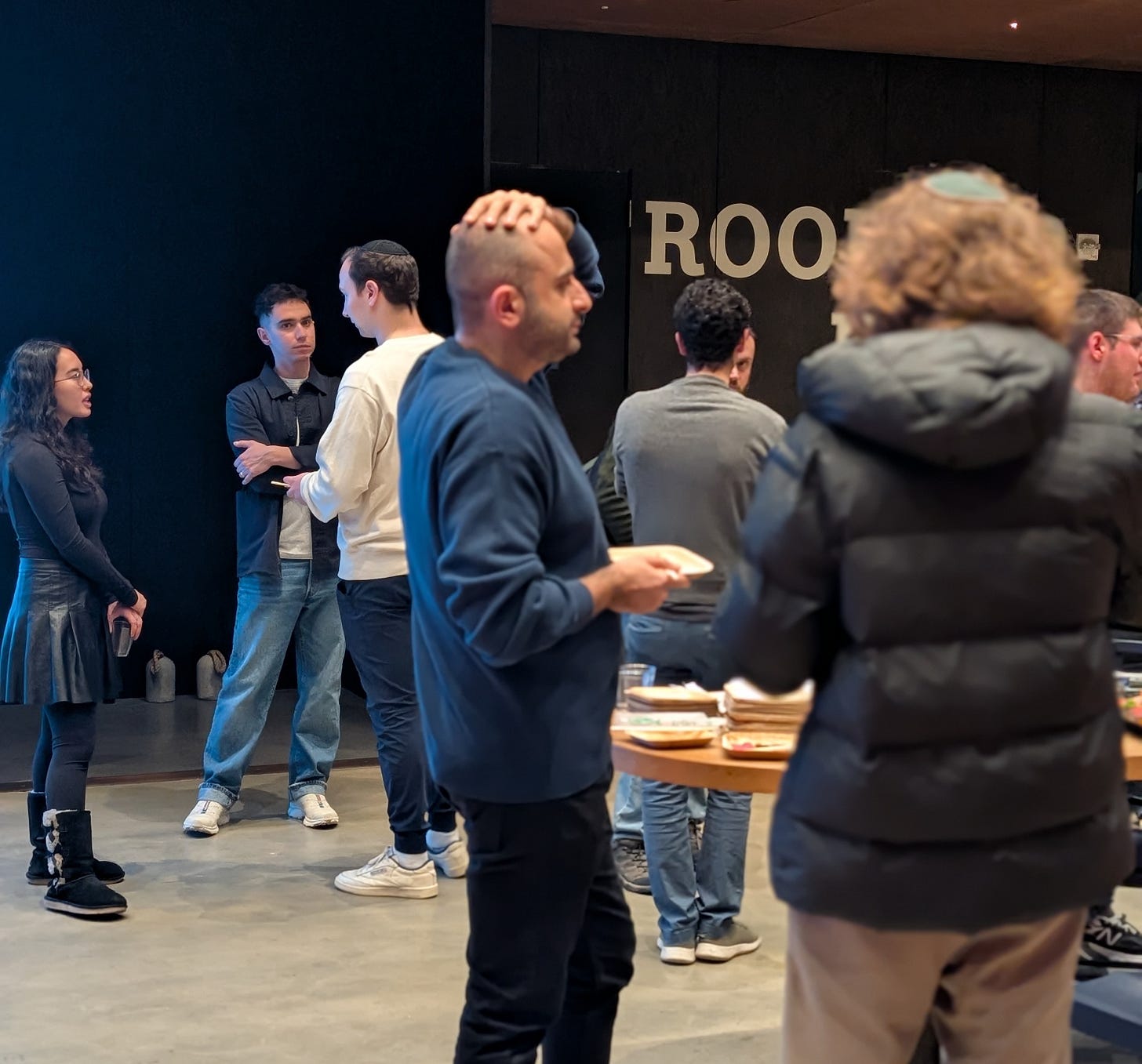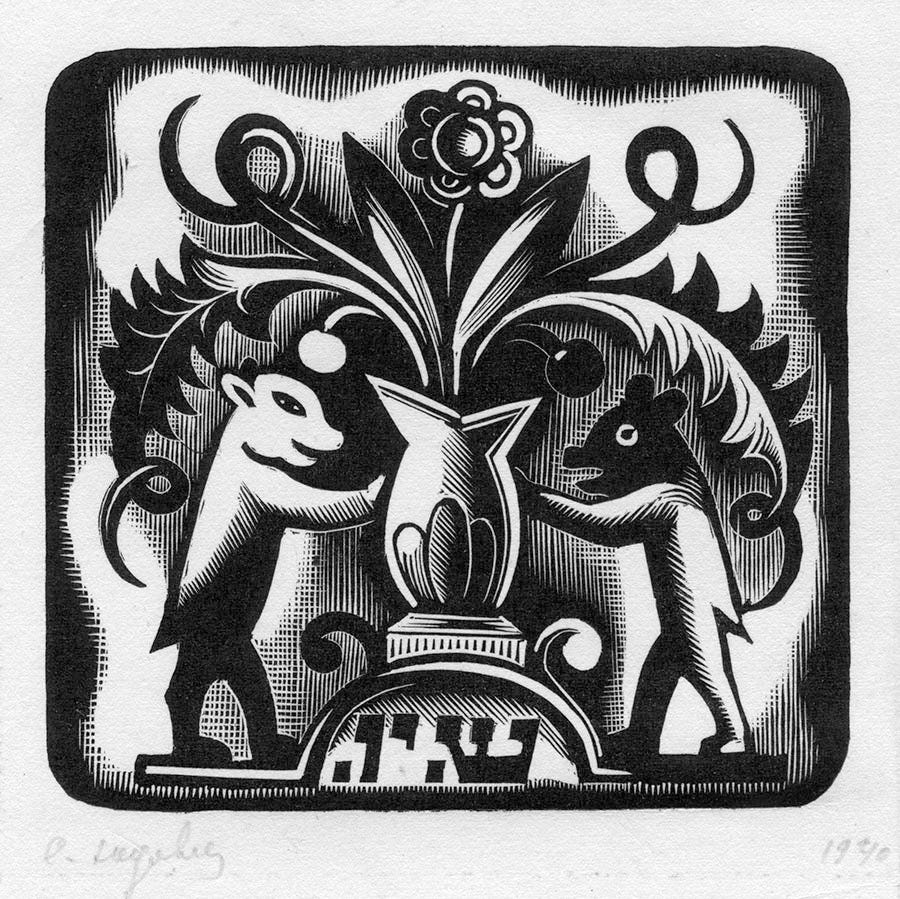💡 Think:
This week’s Guest Thought was written by my dear friend and colleague, Eli Rubin. Enjoy his beautiful thoughts on this week’s Torah portion. He’s recently published two works - they can be found in our Fave section below!
The hero of this week’s parshah is Betzalel, the master-craftsman who constructed the Tabernacle and its vessels in accord with divine instructions recorded earlier, in parshat Terumah. First among these vessels is the golden Ark of the Covenant, topped by two cherubs, and housed in the Holy of Holies, the innermost chamber of the Sanctuary. The Midrash attributes the Ark’s superlative sacredness to the “contraction” or “concentration” of God’s feminine “indwelling” (“the shekhinah”) within it: In the ark “is the shade of the Holy One, blessed be He, wherein He contracts (metzamtzam) His shekhinah.” According to the Midrash, moreover, the nature of the Ark is encoded in the name of the craftsman who made it: “He was called Betzalel”—a combination of the Hebrew word for shade (tzel) with a Biblical name for God (el)—“because he made a shade for the Holy One … between the two cherubs.”
Superlative sacredness, it transpires, is constructed through superlative separation and concealment. The Ark isn’t merely housed in the sacred Tabernacle, but further screened off in the Holy of Holies. Yet, the Midrash emphasizes, this place of separation and concealment is also the place of revelation and connection, the fulcrum of communication between God and humanity. Of the space between the cherubs wherein the shekhinah is shaded, God says to Moses: “I will meet with you there, and I will speak with you.”
Even today, the model provided by the Israelites’ desert encampment, with the Tabernacle and Ark at its center, remains a hallmark of Jewish communal life. Community is centered on a consecrated synagogue, within which the Torah scrolls are held in the curtained Ark. Divine presence is manifested in society precisely through its concealment. As the great sociologist, Émile Durkheim (1858-1917), explained, “the division of the world into two domains, one containing all that is sacred and the other containing all that is profane” is “the first criterion of religious belief.” But, he continued, this division “cannot go so far as to make all communication between these worlds impossible, for if the profane could in no way enter into relations with the sacred, the sacred would be of no use.” Fundamentally, religion depends on the “delicate operation” of placing the sacred and the profane “in relationship.” The result is necessarily transformative: “The two genera, cannot at the same time, both come close to one another and remain what they were.” (The Elementary Forms of Religious Life, trans. Karen E. Fields, 34-8.)
The above Midrash is not only concerned with the Ark’s role in the social construction of the sacred, but also with the Ark’s representation of the construction of the cosmos itself. The construal of the Ark as the site of divine concealment and communication, comes on the heels of a debate: One rabbi opined that “The Holy One, blessed be He, created darkness first, and afterwards He created the world.” Another said, “He created the world first, and afterwards He created darkness.”A third responded, “When He decided to create His world, He cloaked Himself with light, and then created the world, as it is written, ‘He cloaks Himself in light like a veil,’ and that is followed by, ‘He stretches out the heavens like a canopy’ (Ps. 104:2).” A few lines later, the Midrash continues: “Moses told Betzalel to begin by building the Tabernacle, but he began instead with the Ark. Why? Because the ark is the abode of the Torah, which is the light of the worlds.”
From the very beginning of this literary unit, the Midrash plays on the resonance between the Hebrew word for light (or) and the Hebrew word for ark (aron). But the meaning of light and the nature of its relationship to darkness is not uncomplicated. Revelatory light is cast as the concealing cloak of God that precedes the creation of the heavens. The Torah’s light emanates from the Ark wherein God is concealed. Naḥmanides (1194-1270), the great exegete, halakhist, and kabbalist, wrote that God’s glory “exceeds anything the heart can possibly imagine,” yet “He contracted (tzimtzem) the glory (kavod) itself … like the measure … between the two cherubs” resulting in “darkness over the countenance of everything.” Ever since, kabbalists have considered tzimtzum the preeminent cosmological event. Much debated is whether this should be understood as a contraction of God from the cosmos, within the cosmos, or both?
The very shape of religious life depends on how this question is answered. If we overly exacerbate the divide between G-d and the world, between the sacred and the profane, we risk untethering worldly life from ultimate meaning and purpose. At one extreme, this can result in nihilism. At the other extreme lies what Durkheim termed “mystical asceticism” and “religious suicide.” Even within the Jewish tradition this has given rise to a wide spectrum of religious orientations between these two extremes. It is telling, however, that Jews continue to center the social construction of sacred community on the curtained light of the Torah in its Ark.

🏃 DO:
🤖 Join us Friday, April 4 for First Friday: Sage Against the Machine - explore how the 19th Machine Matzah controversy helps us better understand the nexus of innovation, intent and humanity in the age of AI.
🍷 Seder with Tech Tribe! Join us the evenings of Saturday, April 12th and Sunday, April 13th for the first and second nights of the Seder!
🎧 Listen:
In wartime Ukraine, Jews embrace their Ukrainian-Jewish identity
🎬 Watch:
🌱 #ChaiSociety
Special thanks to the #ChaiSociety members who donate monthly to support our community!
Adam Kotok, Avrohom Margolis, Bill Dilworth, David Lobron, Cal Nathan, Chanoch Rosenberg, Fitz Tepper, Hershey Gutnik, Jacob Ner-David, Lev Podelko, Levi Plotkin, Liel Leibovitz, M. Kahn, Manilan Houle, Mattanya Ginsburg, Melissa Davis, Mendel Konikov, Michael Morgenstern, Nikita Sokolsky, Scott Shapiro, Sholom Laine, Tzali Reicher
Tech Tribe is entirely community-funded - Invest in Tech Tribe (starting at $36 a month), and join the monthly #ChaiSociety!
📚 Read:
🕴🏻 Chabad rabbi becomes a Microsoft corporate vice president
💻 How A.I. Is Changing the Way the World Builds Computers
💸 Silicon Valley Invests in Israeli Startups in Bid for U.S. Defense Market
🛀 Archaeologists Unearth Oldest Jewish Ritual Bath Found in Europe
📜 Our Grandmothers, and the Scrolls They Gave Us
🔥 Lit:
This week, light Shabbat candles in NYC at 6:51 PM
For Shabbat candle-lighting time in your area click here.
😍 Fave:
Eli Rubin, the author of this week’s guest post, recently authored Kabbalah and the Rupture of Modernity: An Existential History of Chabad Hasidism
He also translated and adapted the highly accessible The Lamdonis.
Like what you saw? Want more? Please feel free to forward this email far and wide!
Support Tech Tribe’s mission to build community and curate epic experiences for young Jews in tech and digital media!








